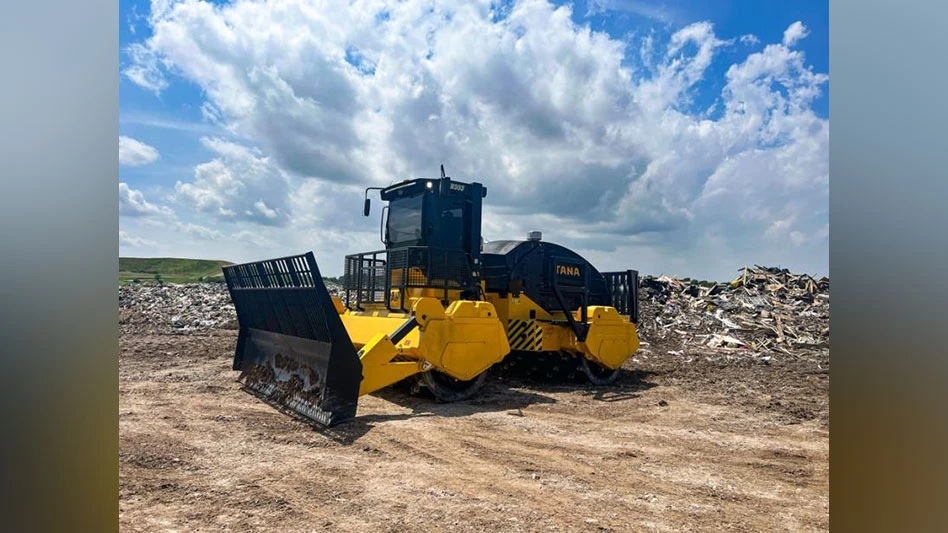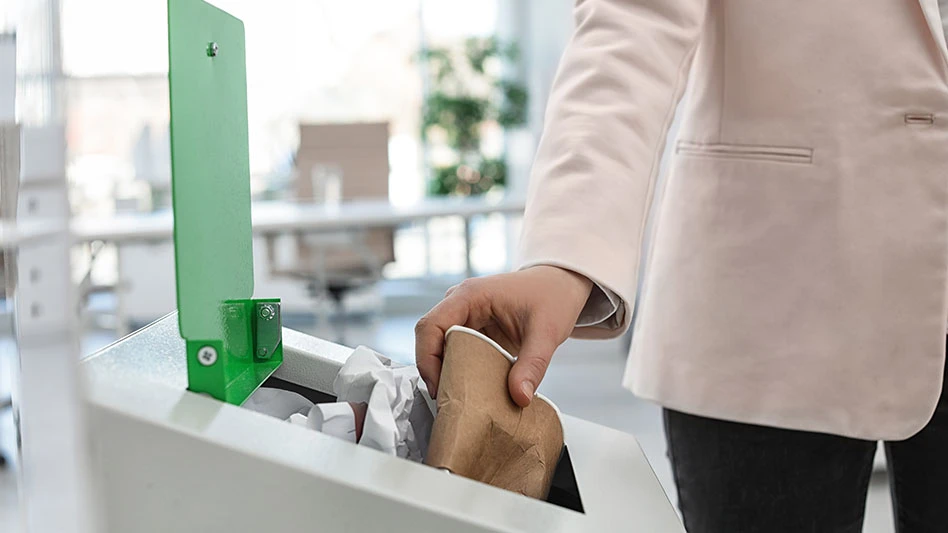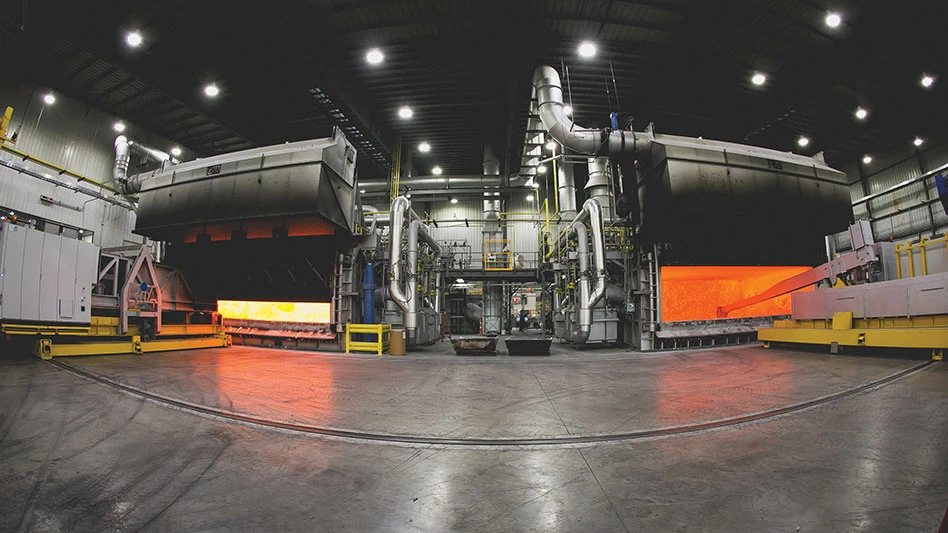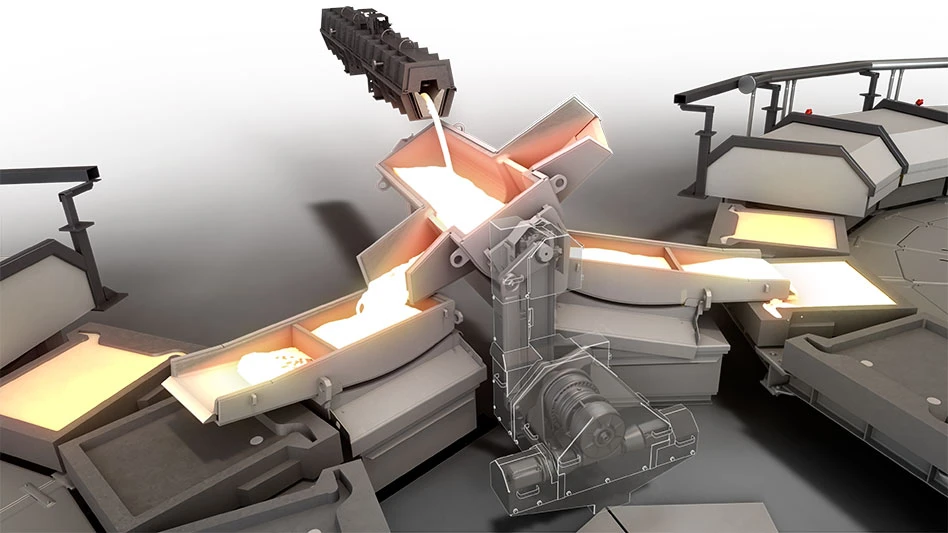Many communities across the United States have been treaded on by scrap tires. Left unprocessed, and in large, unsightly piles, tires pose a fire safety threat and can be the perfect place for vermin and mosquitoes to breed. That’s why there has been so much government and private industry attention given to solving the nation’s scrap tire problem in the last decade.
Currently, there are about 750 million tires stockpiled in the U.S. For 1995, about 253 million more scrap tires were generated, and 69 percent of that, or 175 million scrap tires, were recycled, according to The Scrap Tire Management Council, Washington. This is good news because in 1990 only 11 percent of the total number of scrap tires generated annually were recycled, and back then the U.S. Environmental Protection Agency, Washington, had estimated that there were between 2 to 3 billion tires littered throughout the U.S. But better scrap tire reporting procedures by states, and aggressive clean-up efforts have caused a significant change in those numbers.
Leading the scrap tire recycling charge is the use of scrap tires as fuel, followed by civil engineering applications, punched/stamped products, crumb rubber and shred applications, and agricultural uses. There are also several categories of tires: passenger, light truck, medium-heavy truck, agricultural, and mining and logging – the latter commonly referred to as over-the-road tires.
In the U.S., about 216,000 OTR tires are produced annually, of which 147,000 are replacement tires, according to the Rubber Manufacturers Association, Washington. Although it is not known exactly how many OTR tires enter the scrap stream annually, it is estimated that the figure mirrors the yearly replacement number, according to John Serumgard, chairman of STMC.
On the surface, 147,000 tires does not seem like a lot of tires, but considering their size and weight, it adds up to a lot of rubber and steel. For instance, 147,000 OTR tires, at an average of 6,000 pounds a piece, is equivalent to the weight of 13 million passenger tires at 70 pounds a piece.
Also, as the tire increases in size, there are challenges that begin to surface, such as different compounding and tough-er rubber; more plies and belts, meaning more fiber and steel; and simply the shear size and weight of the OTR tire.
It is these huge OTR tires, some as big as 12 feet in diameter, weighing up to 12,000 pounds and with tread widths up to 57 inches, that pose the biggest problem for recyclers. The tire retreading and repairing industry has helped return many of these giants back to service, by giving the tires two, three and sometimes four and five new treads, and there are some processors and equipment makers that have met the challenge of recycling the giant tire, but there is a concern that not enough is being done.
Because of the difficulty recycling OTRs, many processors, haulers, tire dealers and municipalities would rather dispose of them in landfills or store them in state-approved monofills until an economical way to recycle them comes along. But as more states ban tire landfilling – currently 25 states do – municipalities and processors will be forced to meet the challenge head on.
|
What New Scrap Tire Processors Need to Know |
|
Processors interested in the reduction of OTR tires should know the answers to the following questions before requesting equipment information: Project goals: What material is being processed? What is the purpose of the end product? Description of materials: What are the largest and smallest materials to be processed? What percentages of each material will make up the overall feedstock? Infeed conditions: Will the materials be loaded singly or in loose batches? Infeed method: How will the materials be loaded into the infeed hopper (front loader, conveyor or grapple)? Processing conditions: What is the desired capacity per hour? How many hours per day of operation? End particle: What are the desired dimensions of the final particle? Why? Courtesy of SSI Shredding Systems |
A BIG JOB
One the biggest problems with recycling OTR tires is cutting through all the built-in steel. While a passenger car tire may have only one or two steel belts, and a pencil-thin wire bead, an OTR tire can have up to six steel belts and four beads – each one as thick as your wrist. And that quantity of steel can be hard on a shredder’s blades. Some processors will not even accept the newer radial OTR tires because there is simply too much metal in the carcass.
OTR tires also contain a lot of rubber. In fact, they have so much that their high rubber-to-metal ratio makes them good sources for crumb feedstock. A passenger tire, for instance, can have two to three plies of rubber, while an OTR tire can have up to 50 plies. However, many of the plies have fiber strands built in for added strength, and then there are the belts and wire beads that must be considered. Typically, an average 8,000-pound OTR tire has about 800 pounds of steel in it, and some can contain up to 1,000 pounds. Thus, cutting or shredding an OTR tire can take a lot of energy.
One way to process the big tires is to use a shear – similar to a metal shear – that can easily break through the thick bead and plies. By doing so, OTR tires can be cut in half or quartered for better storage, and for follow-on shredding.
Another pre-processing step is to remove the bead altogether from the tire.
Currently, there is equipment on the market to do both operations. Tire Resource Systems, Sioux City, Iowa, for example, has a machine called the Tuf-Cut that shears tires up to 6 feet in diameter, and the Titan II that can handle tires up to 12 feet in diameter. After the tire is cut, the sections can be thrown into a shredder for further size reduction.
The shear can also be used to cut the thick bead out of the tire after it is sectioned, but doing so will decrease the machine’s throughput capacity, according to Butch Hoffman, sales representative for Tire Resource Systems. "The bead area on OTR tires is not easy to remove and recycle," he says.
The OTR tire reduction industry is still awaiting an efficient debeading process, according to Bill Phelan of SSI Shredding Systems Inc., Wilsonville, Ore. "Debeaders are common to scrap passenger- and truck-tire processing operations, but to our knowledge no debeaders large enough to handle OTR beads have been made to date," he says. "Some processors use Sawzalls to manually cut out OTR beads, but it is a highly dangerous and time-consuming operation."
SSI makes a low-speed, high-torque shredder that can handle OTR tires up to 3,500 pounds. Two counter-rotating shafts grab and shear the material against opposing cutters. Shredders like these are routinely used to reduce the size and volume of other tough materials, such as construction and demolition debris, steel drums, wood waste, oversized bulky wastes and white goods. So OTR tire recyclers should look for processing equipment that is made to handle these types of materials.
Another type of processing equipment that can shred whole OTR tires is a tub grinder. The large tub size and the hardened manganese-based, carbide-tipped "hammers" inside the tub can easily shred OTRs.
One major tire company, Bridge-stone/Firestone, Nashville, Tenn., has a subsidiary company called Tire Solution West based in Menifee, Calif. Tire Solution West operates what it claims is the largest mobile shredder capable of handling giant OTR tires. The shredding system consists of a Diamond Z tub grinder powered by twin 800 horsepower engines and a wheel loader with bucket and shears. The only item the shredder needs when it arrives at a site is level ground and a water supply. The system can process about 30 to 50 tons of tires an hour.
At press time, the Tire Solution West shredder was at a site on Long Island processing tires. "It’s a major project, and the shredder has been there since last May," says Melissa Dykstra, public relations manager for Bridgestone/Firestone OTR tires.
"The disposal of whole tires, especially large OTR ones, is becoming more difficult for end users and tire dealers," says Joe Rayna, national marketing manager for Bridgestone/Firestone Off Road Tire Co., Bloomington, Ill. "Shredded tires, however, can be used by some power plants, cement kilns and paper mills as a fuel source. Shredded tires can also be used in many areas as liner and cover material for landfills. Some mining operations can even use the shredded material in their haul roads."
If processors are going to try to sell the OTR chips to a crumb rubber processor, or process the chips into crumb themselves, they should make sure the chips are kept separate from all other types of chips, warns Jerry Holland, technical director of National Rubber Baker Materials, South Bend, Ind. Because of the different compounding from tire type to tire type, NRB likes to specify that all chips come from one type of tire source, such as all passenger, truck or OTR tires. NRB is a tire processor that makes crumb out of whole tires, or from shredded tire chips that it buys from first-level processors.
"The OTR shreds are usually significantly different for the rest in terms of compounding, and we need to segregate the OTR chips," he says. "So, it pays to keep track of what is shredded."
STAMPING OUT OTRs
One company that has taken on the OTR, is F&B Enterprises, New Bedford, Mass. F&B claims to be the largest recycler of OTR tires in the U.S. The company, which has been in business for 25 years, processes about 300 OTR tires a week at two locations.
F&B, however, only accepts bias OTR tires, and not radials, because the radials have too much steel in them and are harder to process, according to Tom Ferreira, owner of F&B.
Instead of shredding the tires immediately, the company first stamps out sections of material from the tires’ sidewall and tread area, and planes and assembles them into various products. "The bigger the tire, the better," says Ferreira. F&B’s most popular product is its patented Wear Pad that attaches onto the bottom of buckets for tractor loaders and snow plows. The pad acts as a cushioned barrier between the steel bucket and the concrete, thus reducing wear and tear of both the bucket and the pavement.
"Airport officials love the Wear Pad for their snow plows because they know they can get out on the runways right after the first snow and know that the plow won’t damage the runway," says Ferreira. "The pad is very tough and forgiving." To date, more than 20 airports are using the Wear Pad.
Another product made by F&B is a rubber roller for the fishing industry. The roller attaches around the chain that is used to anchor large fishing nets. As the net is dragged along the ocean floor, the rollers help keep the chain from snagging on rocks and other bottom obstacles.
Other products made by F&B include boat bumpers, pads and fenders, dock piling protectors and various chafing gear devices. In fact, the company has a dedicated ‘fishing gear’ sales department because its products are so popular in that industry.
As with any stamping operation, there is prompt scrap, and whatever is left over from F&B’s stamping operation is thrown into a large Columbus-McKinnon tire shredder. "After the day is through, I don’t have any waste left," says Ferreira, who sells the tire chips to paper mills and cement kilns that use the shred as fuel. "Right now, the market is very strong in the Northeast for tire-derived fuel. Everybody wants it because it burns cleaner than coal and is very price competitive. The kilns like it because they also need the steel in the tires to make cement."
In addition to handling OTR tires, F&B also processes about 1,000 truck tires and 14,000 passenger tires a day.
While the company gets enough truck and passenger tires, it cannot get enough OTR tires. Already, F&B has begun to reach out as far south as Virginia, and as far west as Pennsylvania for the big tires. The company charges no tipping fee, but will, on occasion, pay transporters the going freight rate to get the tires delivered to New Bedford.
TIRE DEALER PROBLEM
Although F&B is going further out to get its supply of OTR tires, it is not far enough for Dave Oster, owner of All-Terrain Tire, Cleveland. All-Terrain handles 75 percent of all the OTR tires in the greater Cleveland area, according to Oster, and has eight service trucks complete with cranes to handle the tires at the job site.
Out of the 10 service calls All-Terrain tiremen make on an average day, three involve tires that can be repaired on site; three require removal of the tire and a section repair to be completed at All-Terrain’s facility; two require removal to be retreaded at another facility; and two are beyond repair and have to be disposed.
Right now, All-Terrain’s OTR tires are going to a landfill or a special state-established tire monofill. "There is no one to take them," says Oster, "and we have to pay $100 a ton for disposal. Some tires weigh a ton themselves."
All-Terrain covers most of its own scrap tire disposal costs by charging its customers an up front disposal fee. "I have to sign a piece of paper that says I am properly disposing of the tire," says Oster.
Oster recalls one firm that successfully laid OTR tires along the floor of the ocean near the East Coast to serve as artificial reefs. About 10 years ago, Oster tried the same thing in Lake Erie by placing 10 OTR tires near Kelly’s Island to help combat beach erosion. So far, the tires are still doing the job.
Retreading and repairing are the most desired recycling methods for OTR tires, but Oster says that there are only about a handful of OTR retreaders remaining in the U.S. According to the American Retreaders Association, Louisville, Ky., there are 36 OTR retreaders in the U.S., who retread about 600,000 OTR tires annually. "That industry has undergone a lot of consolidation, and it is worrisome to someone like me," says Oster.
The author is managing editor of Recycling Today.
Get curated news on YOUR industry.
Enter your email to receive our newsletters.

Explore the March 1996 Issue
Check out more from this issue and find your next story to read.
Latest from Recycling Today
- Fenix Parts acquires Assured Auto Parts
- PTR appoints new VP of independent hauler sales
- Updated: Grede to close Alabama foundry
- Leadpoint VP of recycling retires
- Study looks at potential impact of chemical recycling on global plastic pollution
- Foreign Pollution Fee Act addresses unfair trade practices of nonmarket economies
- GFL opens new MRF in Edmonton, Alberta
- MTM Critical Metals secures supply agreement with Dynamic Lifecycle Innovations






